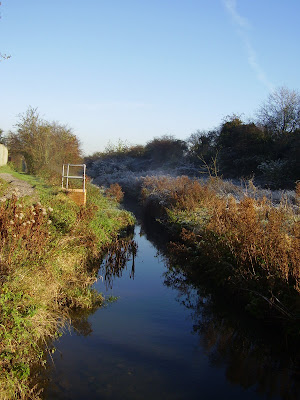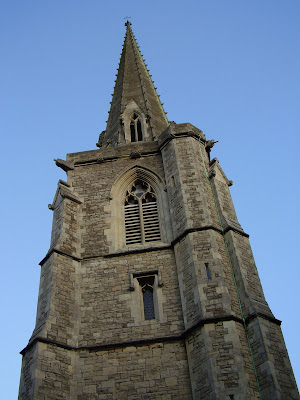

These two very mature silver birches stand in the garden of the Old Vicarage on Bath Road. The lovely red brick Victorian building used to be the vicarage for Christ Church in Old Town. When that was relocated to a building next to the church the Old Vicarage stood derelict for many years before being bought by a housing association and converted into retirement flats. (My dear mother now lives there - which is how I got to take a picture of these two golden oldies today).
A poem for Armistice Day
Everyone Sang - by Siegfried Sassoon
Everyone suddenly burst out singing;
And I was filled with such delight
As prisoned birds must find in freedom
Winging wildly across the white
orchards and dark-green fields; on; on; and out of sight.
Everyone's voice was suddenly lifted,
And beauty came like the setting sun,
My heart was shaken with tears; and horror
Drifted away ... O but every one
Was a bird; and the song was wordless; the singing
will never be done

 Dawn - just before sunrise in central Swindon. In the middle of our busy town, late December - Nature still flourishes, the moon rises, the sun sets and day breaks. These pictures were taken from the back-bedroom window of my little house which backs onto the hill-side Radnor Street Cemetery (also a designated nature reserve). My 'postage stamp' walled back garden faces south so the house is essentially a morning house. At this time of year a lone star shines brightly as the sky gradually lightens to day-break. By ten o'clock the sun has risen over the hill-top, bursts through the trees and radiant sunlight tumbles down the staircase.
Dawn - just before sunrise in central Swindon. In the middle of our busy town, late December - Nature still flourishes, the moon rises, the sun sets and day breaks. These pictures were taken from the back-bedroom window of my little house which backs onto the hill-side Radnor Street Cemetery (also a designated nature reserve). My 'postage stamp' walled back garden faces south so the house is essentially a morning house. At this time of year a lone star shines brightly as the sky gradually lightens to day-break. By ten o'clock the sun has risen over the hill-top, bursts through the trees and radiant sunlight tumbles down the staircase. 
















































